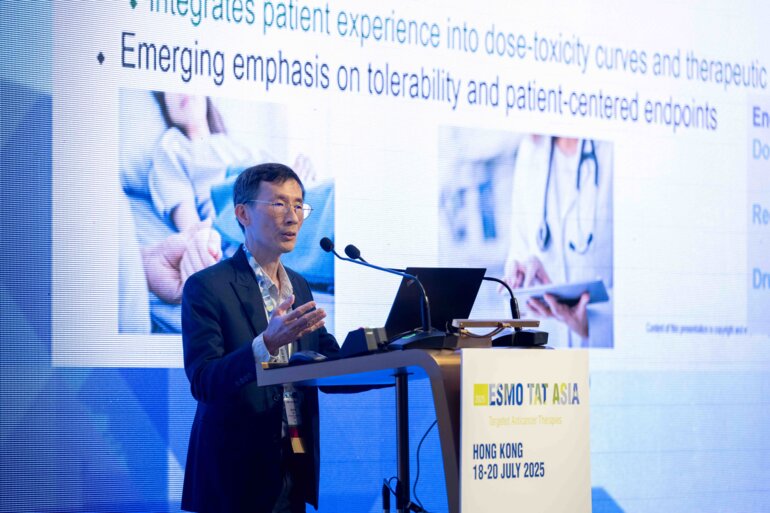The value of genomic testing is being increasingly demonstrated and will evolve over time
The subject of Thursday’s Controversy Session at ESMO Breast Cancer 2022 – the utility of molecular profiling in metastatic luminal breast cancer – is an important topic that will be debated often in the coming years as this field develops from its current stage of infancy.
I think everybody working in breast cancer and in oncology recognises that genomic testing is becoming increasingly important and, in our practice, it is now a routine part of the management of metastatic breast cancer. However, if we actually consider how often the results of molecular profiling currently change treatment decisions and impact on outcomes, then I think the idea that genomic sequencing is transforming care in the metastatic setting is premature at the moment. For example, detecting an ESR1 mutation may mean that an aromatase inhibitor is avoided; however, these mutations are usually discovered in women who have already had an aromatase inhibitor and these agents would not be used again anyway. Rarity may also preclude value. In some instances, molecular profiling does detect mutations that lead to a specific course of treatment, such as administering a selective kinase inhibitor to women with an NTRAK mutation, but these mutations occur very rarely. ESMO Guidelines recommend that genomic profiling should only be carried out as part of routine clinical practice if the result will change the treatment approach, as guided by the ESMO Scale for Clinical Actionability of molecular Targets (ESCAT) or if the patient can access appropriate clinical trials (Ann Oncol. 2021;32:1475–1495).
There are several directions where I think molecular profiling will be more useful in the future. One area is the mapping of individual patients’ tumour changes. Knowledge about tumour evolution, including resistance mutations, could be used to guide clinical decisions; however, it is unrealistic to obtain and profile multiple tumour biopsies given the technical difficulties and the considerable burden for the patient. Instead, we could look towards molecular profiling of cell-free DNA as a way of assessing tumour growth and response to treatment.
In early-stage breast cancer, genomic tools like RNA expression assays and related gene signature tests have transformed management, particularly with regard to which women with oestrogen receptor (ER)-positive breast cancer need chemotherapy. I think there will be greater use of this type of genomic medicine across breast cancer settings in the future, including in hereditary breast cancer testing. An innovation over the last couple of years is the development of treatments that are active against germline BRCA mutations (N Engl J Med. 2017;377:523–533; N Engl J Med. 2018;379:753–763). More genetic testing could potentially be considered in women with high-risk early-stage or metastatic breast cancer to match women with these mutations to new therapies.
Finally, molecular profiling will only be classed as truly useful when it is available and affordable all over the world. There are genuine concerns that as the diagnostic testing costs rise, along with increasing medication prices, more disparities will be evident in terms of who can access cutting-edge technologies and treatments. As time goes by, the platforms for these technologies should become less expensive, in the same way that the overall price for genome sequencing has come down, and there may be similar kinds of scale incentives to offer testing at a lower price in the future.
There is no doubt that molecular profiling has its uses, but I do not think it has realised its full potential yet across all breast cancer settings.
Don't miss:
Is molecular profiling useful for metastatic luminal breast cancer? ESMO Breast Cancer 2022
Controversy Session, 05.05.2022, h. 09:00 – 10:00, Munich Hall
Watch the session on the Congress virtual platform.






